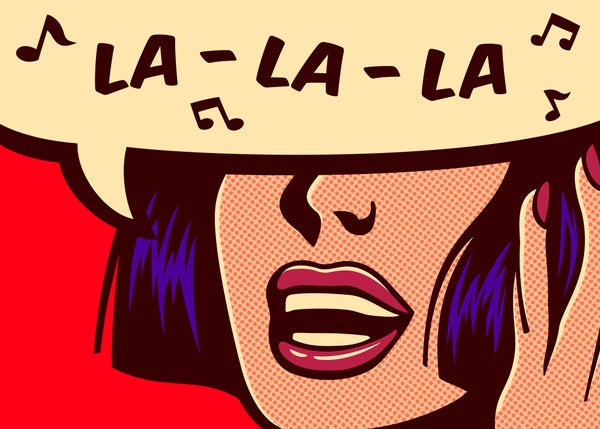Song Lyrics Really Are Getting Simpler and More Repetitive, Study Finds

Song Lyrics Really Are Getting Simpler and More Repetitive, Study Finds
An assessment of hundreds of thousands of songs confirms that choruses and hooks have taken over—but simpler isn’t necessarily worse

Drante/Getty Images
When comparing today’s hit tunes with the top 40 of past decades, strong opinions are never in short supply. Every generation seems to lament its successor’s musical tastes and listening habits. Though science can’t necessarily account for such subjective preferences or generational divides, new research suggests popular music has indeed undergone some measurable and significant shifts over the past 50 years—with popular song lyrics becoming simpler and more repetitive, according to a study published on Thursday in Scientific Reports.
“There’s more rhyming lines and also more chorus,” says the study’s senior author Eva Zangerle, a computer scientist at Austria’s University of Innsbruck, who has developed music recommendation algorithms. “We basically found that lyrics [have gotten] easier to comprehend.” This trend, observed across five of the most popular English-language music genres (pop, rock, rap, R&B and country) since 1970, hints at how shifts in music listening habits, platforms and production may be shaping pop culture.
Zangerle and her co-authors compiled lyrics from 353,320 well-known songs released between 1970 and 2020. They used machine learning to single out these songs’ key linguistic features, such as the ratio of repeated words, the types of emotional cues, a readability score and the richness of vocabulary. Then they developed and trained additional models to sort and analyze those features across years in a representative subset of 12,000 songs.
On supporting science journalism
If you’re enjoying this article, consider supporting our award-winning journalism by subscribing. By purchasing a subscription you are helping to ensure the future of impactful stories about the discoveries and ideas shaping our world today.
The researchers discovered that the ratio of repeated to nonrepeated lines has ticked up across genres over the years, nearly doubling for pop songs and rising even more rapidly for rap music. The ratio of choruses to other song sections rose as well. The study also found that contemporary music lyrics convey more negative emotions and fewer positive ones than in the past and that songs have become more personal, with a higher frequency of pronouns such as “I” and “me”—echoing past research findings about shifts in lyrical content.
“I thought this study was really cool,” says Michael Varnum, a cultural psychologist at Arizona State University, who was not involved in the new research. Varnum has previously studied popular music and detected similar declines in lyrical complexity over time. This new work replicates those findings with a more inclusive sample, he says, by surveying an order of magnitude more songs, comparing across genres and looking beyond the biggest chart-toppers to assess the larger landscape of what people listen to.
Yet even this study’s expansive dataset isn’t completely comprehensive. Its focus on English-language songs—compiled from the online platform Genius—means it is inherently biased toward the Western cultural canon, Zangerle says.
Emotional intention and meaning, too, are hard to parse from lyrics alone, says Robin James, an independent popular music and philosophy scholar. James points out that slang terms such as “slay” might appear angry or violent in an automated assessment but actually convey a positive emotional meaning. Even complexity is challenging to quantify, she adds. Lyrics that seem like simple gibberish at first can actually be clever wordplay, James points out, noting Missy Elliot’s backward lines in the 2002 hit song “Work It.”
And lyrics are just one small part of what makes up a song, says Kaleb Goldschmitt, an ethnomusicologist at Wellesley College and co-editor of the Journal of Popular Music Studies. Even if lyrics are getting simpler, musical factors such as texture and rhythm seem to be getting more complex, Goldschmitt says.
Still, shifts in lyrical structure—particularly a boom in choruses—are apparent enough that music scholars have already been noting the trend for a few years, James says. It isn’t clear why these repeated sections are taking up more time in songs. But based on his past research, Varnum hypothesizes that the sheer amount of new music being produced could partially explain the phenomenon. “When people are faced with lots and lots of choices, they tend to prefer things that are easier to process and more straightforward,” he says.
The way people interact with songs has also shifted, Varnum adds, with more and more listeners tuning in to music while multitasking. “It would make sense that if it’s in the background, you don’t necessarily want things that are going to be challenging or attention-grabbing,” he says.
Today’s prevalence of streaming, Zangerle suggests, may also play a role by changing the ways artists compose for their market. Instead of investing in a whole album based on a single familiar song, listeners can now easily—and freely—preview every song an artist makes. This could ramp up pressure on artists to ensure all their songs are as catchy as possible.
But catchiness isn’t inherently negative, and music fans shouldn’t overthink what they like to hear. “Whether [the trend is] good or bad—that’s something I try to stay out of when thinking about science,” Varnum says.
“Complex music isn’t necessarily better music,” Goldschmitt notes. “If that were the case, we’d all be listening to prog rock.”





